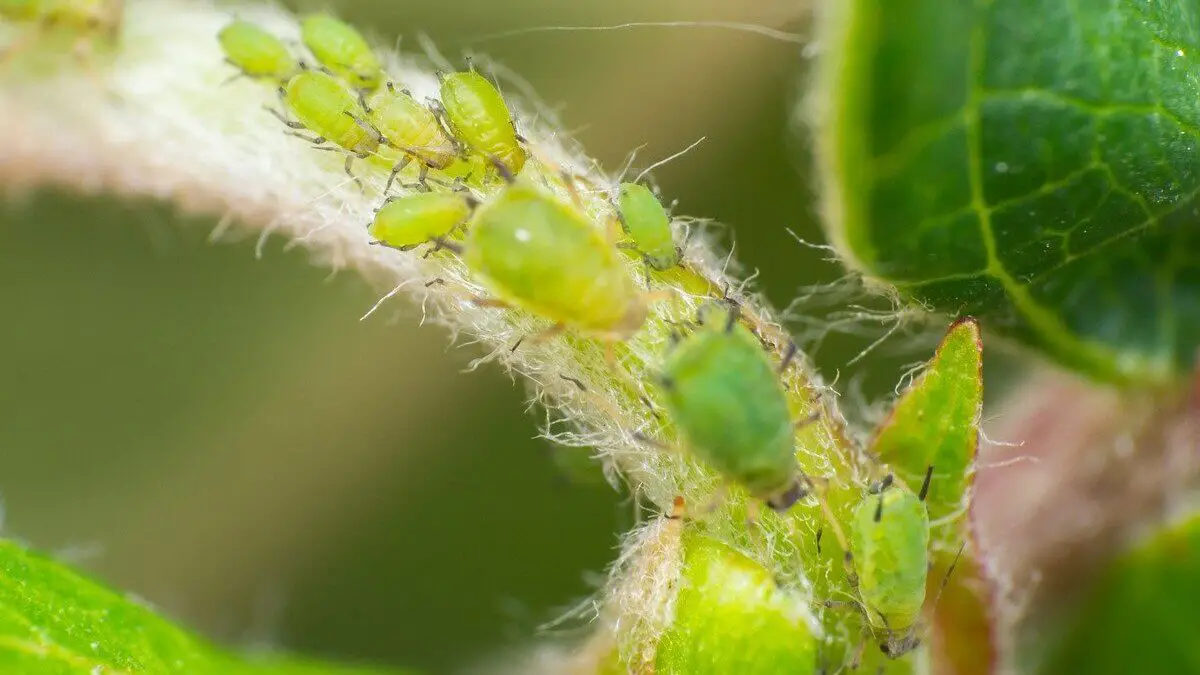What are Aphids and How to Treat Them
Aphids belong to the superfamily Aphidoidea. These tiny sap-sucking insects have several names including white woolly, blackfly, and greenfly. The members of different species have different colors.
This article primarily focuses on aphids, their characteristics, infections, and treatment.
Ecologically, these pests are seen as highly successful organism groups. This is because they can increase in large numbers through asexual reproduction. You can term this also as ‘telescoping of generations.
Species
The Aphididae family includes around known 5,000 Aphid species. About 400 of them feed on fiber and food crops. Most of them can cause serious damage to the crops. Typically, some species like potato aphids, cabbage aphids Etc., are found to be dedicatedly feeding on one or two types of plants. However, most of them like green peach aphids, feed on many types of plants.
Table of Contents
Characteristics
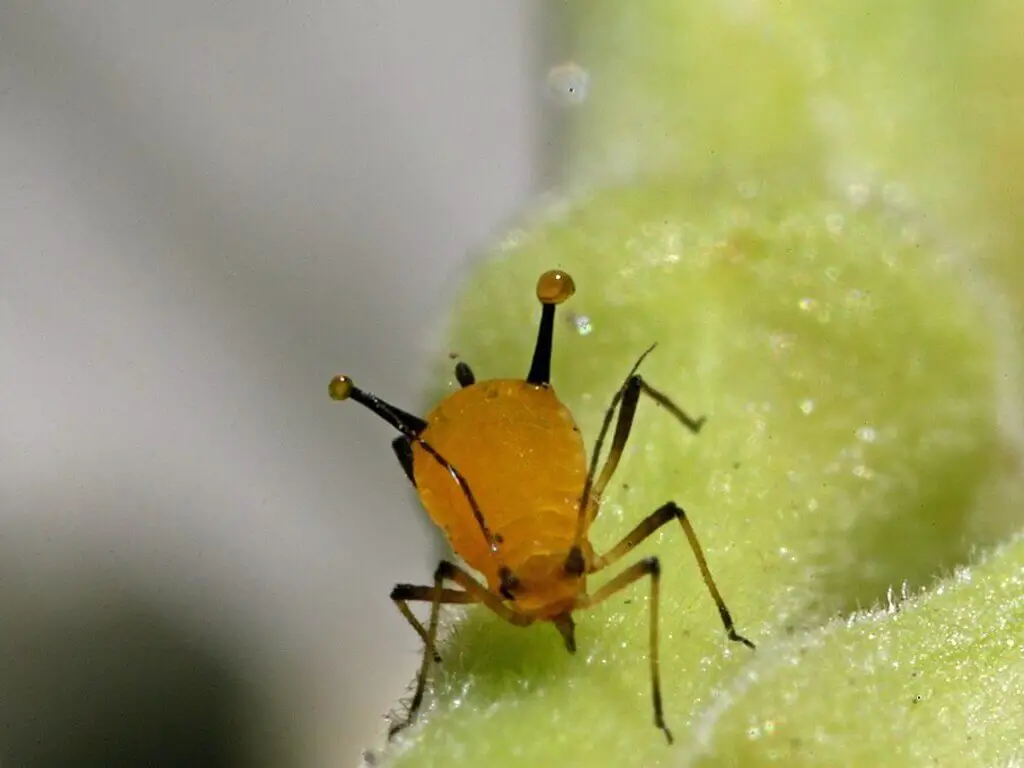
Photo by Sanjay Acharya (CC BY-SA 3.0)
In most cases, these soft-bodied insects are barely visible to the naked eye. Measuring under 1/4 inch, they can appear in various colors including grey, brown, black, yellow, green, pink, and white.
With long antennae, they have pear-shaped bodies. Some species may also have woolly or waxy coated bodies. Most Aphid species project two cornicles (short tubes) from their behind (hind end).
These pests have perfect for sucking – needle-like mouthparts. They pierce the foliage tissues with them and force suck the sap. In addition, they also act as vectors for various disease-causing plant viruses. These pests deposit honeydew on foliage, following which the sooty molds develop.
Mostly, they infest plants in large numbers. It is very rare to see them in small groups or as singles.

Having a mutualistic relationship, dairying ants protect these pests from predators. These ants feed on the honeydew produced by the Aphids.
Reproduction
In a life cycle, flightless females give birth to female nymphs. Interestingly, these newborn nymphs may also be pregnant. Without male involvement, these reproductions happen. As referred by the scientists, this “telescopic development” is common in some species of insects.
Maturing rapidly, the female insects breed in large numbers. Thus, they multiply rapidly in a short time. In one season, they can breed multiple generations. Later in the season, these females may develop wings and colonize new plants.
In most temperate regions, these insects may reproduce sexually also during autumn. In these cases, the nymphs mostly overwinter as eggs.
How to Identify Aphid Damage in Plants
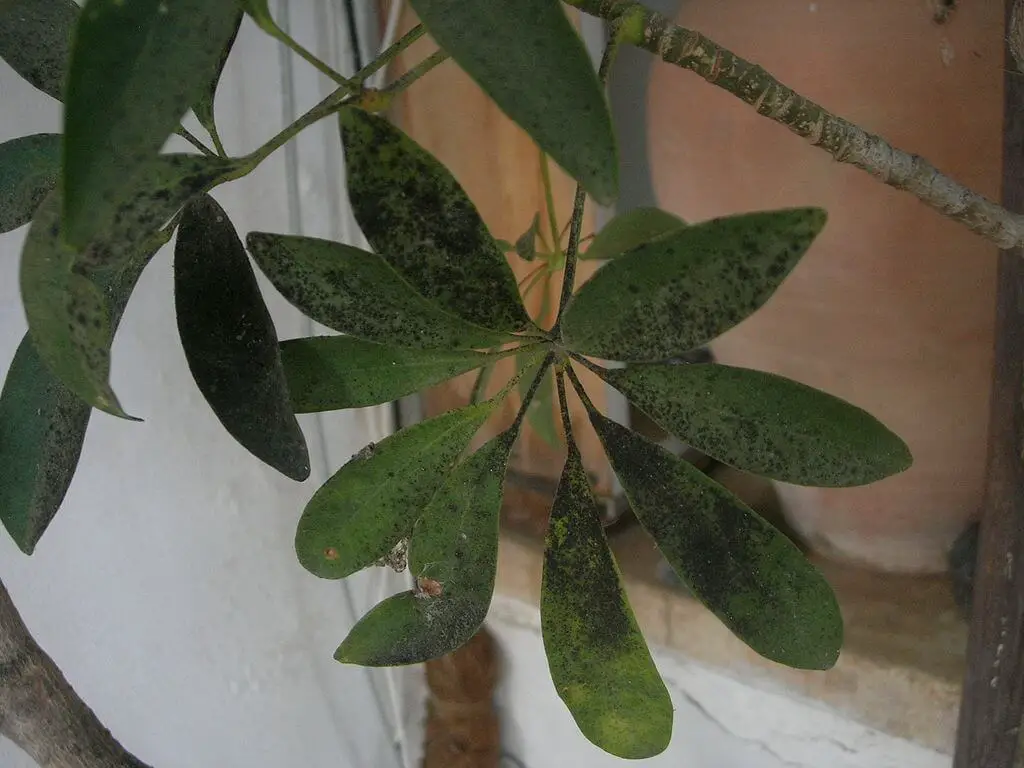
Photo by Amnon Shavit (Creative Commons) (CC BY-SA 3.0)
Most Aphid Species prefer especially to feed on new plants. However, they almost never fail to infest even fully matured healthy plants, under favorable environments. Particularly in late spring, when the temperatures are about 65°F – 80°F, these pests cause great damage to plants.
1.) Check the plants for curling, shriveling, stunted or discolored leaves. Similarly, check the underside of the foliage, as these pests hide there most of the time.
2.) The infected parts may also be covered with a sticky substance known as “honeydew”. Attracting other insects, this sugary liquid develops sooty molds (fungal growth). Hence, the infected parts may begin to appear black.
3.) Being deformed or distorted, the infected fruits and flowers may lose their color.
4.) The infected roots may sometimes develop galls.
5.) Attracting predators, these pests can spread to nearby plants.
6.) Most likely, the infected plants attract various harmful viruses. This causes serious diseases in them. As a result, they may die entirely, with no chance of recovery.
How to Treat Aphids
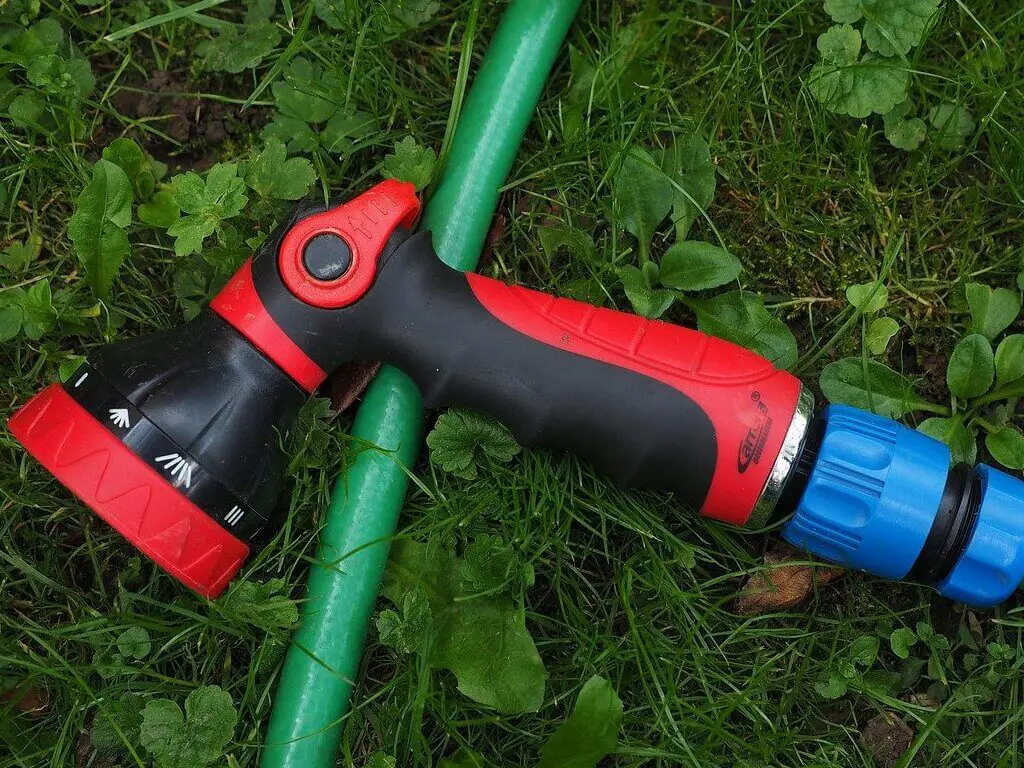
Without using hazardous chemicals, you can use organic or natural methods to control Aphids. Naturally, some birds and insects feed on these insects. In fact, you can remove these slow-moving insects with your hands or target them with blazing sprays.
Aphids multiply profusely and quickly. So, you may have to try repeatedly with different methods or combinations to control them. Depending on the nature of the cases, it may take a little bit of time. Hence, it is advisable to be patient and persistent.
Removing by Hand
If they are less in numbers, just remove them by hand wearing garden gloves. Immerse them in soapy water. This kills them completely.
Instead, you can also prune off the infected parts and drop them in a bucket filled with soapy water. This is enough to kill them completely.
Hose Water
If the infection is at initial stages, you can just blast the pests off with high-pressure water from a garden hose. This method may not be suitable for young, delicate plants. But well suited for matured stronger plants.
Growing Right Plants
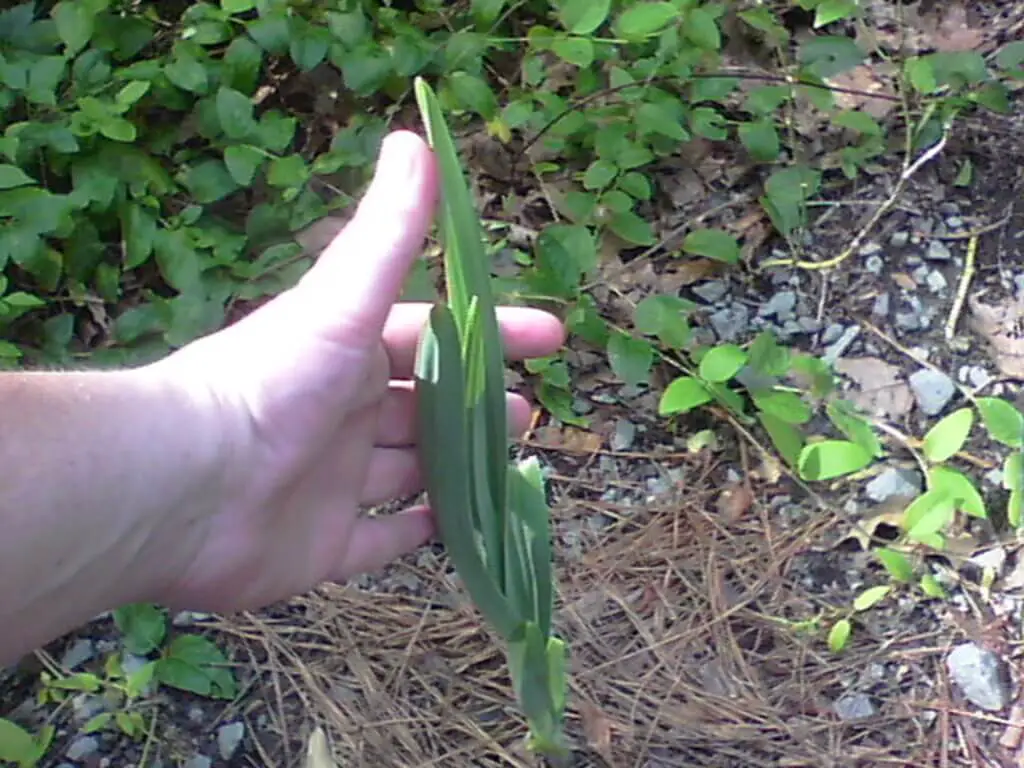
Photo by Naturalstyle91 (Creative Commons) (CC BY-SA 4.0)
Plants that Repel Aphids
Naturally, there are some plants that can repel Aphids. It simply means these pests hate their smell. Some of them include onion, garlic, chives, allium, and Catnip.
Plants that Attract Beneficial Insects
By growing plants like yarrow, fennel, mint, clover, dill Etc., you can attract beneficial insects. For living, these insects feed on several plant pests including Aphids. As a result, your plants can become pest-free in a short time.
Plants that Lure Aphids
In fact, some plants can lure Aphids away from seedlings you wish to protect. These pests love to dwell in them. For instance, plants like mustard, asters, Zinnias, cosmos, dahlias, nasturtium, etc., can lure a few pests including Aphids towards them.
Engaging Natural Predators
Lady Beetles
When you have a large aphid population, you can introduce ladybirds. Feeding on pests, these beetles’ mate and lay eggs. The larvae of these beetles feed on these pests more vigorously than adults.
As expected, this method may be a bit time-consuming. But it is one of the successful and naturally effective methods. However, you may have to repeat the application several times, as most of the beetles fly away in a couple of days or so. Be aware that, the success ratio depends on Larvae, not the adults.
Before releasing the beetles, mist the plants with water sprays. This encourages flies to drink the water and settle in plants for at least a few days.
Release them during early mornings or evenings. They love to be habitat to plants in these cooler parts of the day.
Green Lacewings
Assisting the lady beetle larvae, the Green lacewings larvae accelerated the process further. These larvae are also known to feed on aphids and other pests. You can easily purchase Green lacewings eggs at local nurseries.
Birds
Birds like chickadees, wrens, titmice, warblers, nuthatches, hummingbirds Etc., are known for their bug-eating habits. You can attract them by installing birdbaths or proving habitat and nesting boxes in your garden. If you grow small shrubs and trees, these birds tend to build their own nests on them. In this way, you can get rid of Aphids naturally
Organic Control Methods
Homemade Insecticidal Soap Solution
In just three simple steps, you can easily prepare a homemade insecticidal soap solution. All you need is just two ingredients – Dish Soap (Pure liquid soap like Castile), water
1.) Choose a clean, sanitized sprayer for collecting the solution
2.) In a gallon of water, mix 4 -5 tablespoons of pure liquid soap
3.) After mixing the solution thoroughly, use it as immediately as possible for yielding effective results.
Do not use detergents or products containing moisturizers, degreasers Etc., In fact, they may harm your plants rather than pests. The solutions made from hard water may be less effective. So, use soft or bottled water to increase the effectiveness.
Typically, the solution itself may not be suitable for all types of plants. Hence, first, observe the plant reaction by spraying on small portions of infection. Avoid using the solution anymore, if you see negative signs like withering, spotting, or browning.
Generally, Aphids hide the underside of the leaves. Hence, make sure to apply the solution directly to the pests, by spraying on leaf undersides and other infected parts. By dissolving the protective outer coverings, this solution kills soft-bodied pests including Aphids.
However, it does not harm hard-bodied beneficial insects or birds. So, it is safe to use this solution on plants. Alternatively, you can purchase readymade insecticidal soaps at online stores or local garden centers.
Neem Oil
Neem oil is a proven effective repellant for pests. It also controls various types of fungus effectively. However, it may repel beneficial insects too. So, use it with caution. You can purchase neem oil sprays at online stores.
Chemical Control Methods
In commercial markets, you can easily purchase chemicals like Acephate, Carbaryl, Malathion Etc. Almost instantly, their harmful ingredients (like Organophosphates and N-Methyl Carbamates) can kill and destroy most plant pests. Aphids have no chance to escape them.
However, these chemicals are highly toxic to humans, beneficial insects, and aquatic life. Even birds cannot escape their toxicity. They can damage our nervous system and cause cancer in Humans.
Word of Caution
The US EPA and government organizations of some other countries have restricted or terminated the usage of certain chemicals. Visit the official agencies for further clarification.
All chemical treatments have to be carried out under the advice/supervision of licensed experts.
Root Aphids
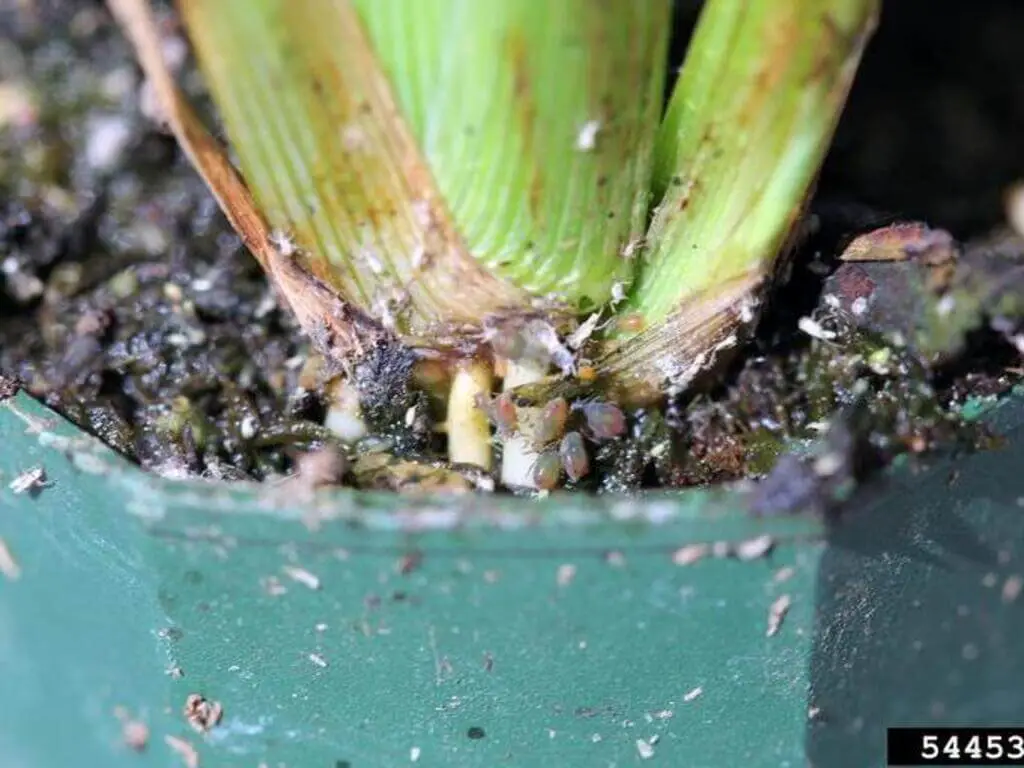
Photo by Whitney Cranshaw (Creative Commons) (CC BY 3.0)
Root Aphids infection is common in indoor plants. It can also infect outdoor plants. The infected plants show common signs like discolored or curled leaves. In addition, the infected plants are susceptible to Powdery mildew, root rots, and other deadly diseases.
In most cases, just above-ground treatments may not be enough. Hence, Introduce beneficial nematodes inside the soil around the infected plants. Without harming other beneficial invertebrates like earthworms, these nematodes protect plants from root Aphids and most other soil-borne pests.
Even though neem oil cannot kill root aphids, it can control the spreading of infection.
Be careful while working with root Aphid infected soils. It is because even the soil stuck in your shoe soles can spread the infection to other locations.
Preventing Aphids
Removing Weeds
Aphids love to settle and feed on some weeds like sowthistle. So, regular weed removal can prevent these pests.
Over Fertilization
Excess nitrogen content causes leafy growth. As a result, the probability of Aphid attack increases many folds. Hence, it is recommended to always use organic materials (like compost) or slow-release fertilizers to feed plants.
Using Barriers
By using good quality floating row covers, you can protect tender seedlings from most of the pests.
Scheduling Pruning
Pruning too early and encouraging fresh growth in advance, in itself is an invitation to pests. Hence, it is advisable to schedule pruning at recommended seasons that differ from plant to plant. In most cases, this ensures the presence of natural enemies that can kill the pests.
In addition, make sure to cut off the infected parts, dead stems, spent blooms Etc., and dispose them of immediately.
Debris Removal
Periodically rake, remove and dispose of the debris as quickly as possible. In this way, you can prevent various pests and diseases that infect plants.
Top Posts
How to Grow Wax Begonia
How to Grow Texas Mountain Laurel

